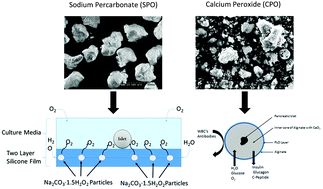当前位置:
X-MOL 学术
›
Biomater. Sci.
›
论文详情
Our official English website, www.x-mol.net, welcomes your
feedback! (Note: you will need to create a separate account there.)
Applications of particulate oxygen-generating substances (POGS) in the bioartificial pancreas
Biomaterials Science ( IF 5.8 ) Pub Date : 2017-10-16 00:00:00 , DOI: 10.1039/c7bm00790f John P. McQuilling 1, 2, 3, 4, 5 , Sivanandane Sittadjody 1, 2, 3, 4 , Samuel Pendergraft 1, 2, 3, 4 , Alan C. Farney 1, 2, 3, 4, 6 , Emmanuel C. Opara 1, 2, 3, 4, 5
Biomaterials Science ( IF 5.8 ) Pub Date : 2017-10-16 00:00:00 , DOI: 10.1039/c7bm00790f John P. McQuilling 1, 2, 3, 4, 5 , Sivanandane Sittadjody 1, 2, 3, 4 , Samuel Pendergraft 1, 2, 3, 4 , Alan C. Farney 1, 2, 3, 4, 6 , Emmanuel C. Opara 1, 2, 3, 4, 5
Affiliation

|
Type-1 Diabetes (T1D) is a devastating autoimmune disorder which results in the destruction of beta cells within the pancreas. A promising treatment strategy for T1D is the replacement of the lost beta cell mass through implantation of immune-isolated microencapsulated islets referred to as the bioartificial pancreas. The goal of this approach is to restore blood glucose regulation and prevent the long-term comorbidities of T1D without the need for immunosuppressants. A major requirement in the quest to achieve this goal is to address the oxygen needs of islet cells. Islets are highly metabolically active and require a significant amount of oxygen for normal function. During the process of isolation, microencapsulation, and processing prior to transplantation, the islets’ oxygen supply is disrupted, and a large amount of islet cells are therefore lost due to extended hypoxia, thus creating a major barrier to clinical success with this treatment. In this work, we have investigated the oxygen generating compounds, sodium percarbonate (SPO) and calcium peroxide (CPO) as potential supplemental oxygen sources for islets during isolation and encapsulation before and immediately after transplantation. First, SPO particles were used as an oxygen source for islets during isolation. Secondly, silicone films containing SPO were used to provide supplemental oxygen to islets for up to 4 days in culture. Finally, CPO was used as an oxygen source for encapsulated cells by co-encapsulating CPO particles with islets in permselective alginate microspheres. These studies provide an important proof of concept for the utilization of these oxygen generating materials to prevent beta cell death caused by hypoxia.
中文翻译:

颗粒状产氧物质在生物人工胰腺中的应用
1型糖尿病(T1D)是一种毁灭性的自身免疫性疾病,可导致胰腺内β细胞的破坏。T1D的一种有前途的治疗策略是通过植入免疫隔离的微囊化胰岛(称为生物人工胰腺)来替代丢失的β细胞团。这种方法的目的是在不需要免疫抑制剂的情况下恢复血糖调节并预防T1D的长期合并症。寻求实现该目标的主要要求是解决胰岛细胞的氧气需求。胰岛具有很高的代谢活性,需要大量的氧气才能正常运行。在隔离,微囊化和移植之前的过程中,胰岛的氧气供应受到干扰,并且由于长期的缺氧,大量的胰岛细胞因此流失,从而为这种治疗方法的临床成功创造了主要障碍。在这项工作中,我们研究了氧气生成化合物,过碳酸钠(SPO)和过氧化钙(CPO)作为胰岛在移植前和移植后的隔离和封装过程中可能的补充氧气来源。首先,在分离过程中,将SPO颗粒用作胰岛的氧气源。其次,含有SPO的有机硅薄膜被用来为胰岛提供多达4天的补充氧气。最后,通过将CPO颗粒与胰岛共同包裹在全选择性藻酸盐微球中,CPO用作包裹细胞的氧源。
更新日期:2017-10-20
中文翻译:

颗粒状产氧物质在生物人工胰腺中的应用
1型糖尿病(T1D)是一种毁灭性的自身免疫性疾病,可导致胰腺内β细胞的破坏。T1D的一种有前途的治疗策略是通过植入免疫隔离的微囊化胰岛(称为生物人工胰腺)来替代丢失的β细胞团。这种方法的目的是在不需要免疫抑制剂的情况下恢复血糖调节并预防T1D的长期合并症。寻求实现该目标的主要要求是解决胰岛细胞的氧气需求。胰岛具有很高的代谢活性,需要大量的氧气才能正常运行。在隔离,微囊化和移植之前的过程中,胰岛的氧气供应受到干扰,并且由于长期的缺氧,大量的胰岛细胞因此流失,从而为这种治疗方法的临床成功创造了主要障碍。在这项工作中,我们研究了氧气生成化合物,过碳酸钠(SPO)和过氧化钙(CPO)作为胰岛在移植前和移植后的隔离和封装过程中可能的补充氧气来源。首先,在分离过程中,将SPO颗粒用作胰岛的氧气源。其次,含有SPO的有机硅薄膜被用来为胰岛提供多达4天的补充氧气。最后,通过将CPO颗粒与胰岛共同包裹在全选择性藻酸盐微球中,CPO用作包裹细胞的氧源。









































 京公网安备 11010802027423号
京公网安备 11010802027423号